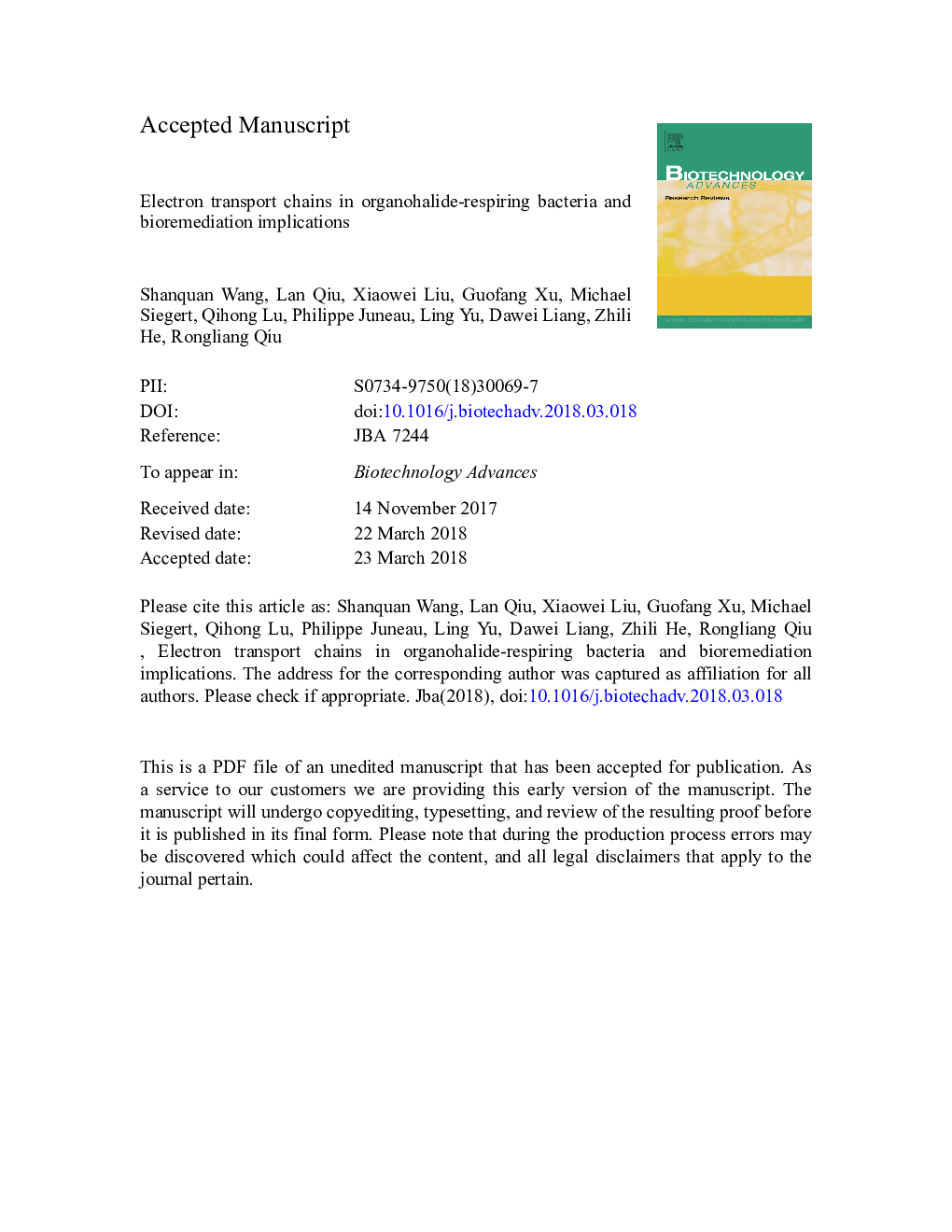| Article ID | Journal | Published Year | Pages | File Type |
|---|---|---|---|---|
| 6486601 | Biotechnology Advances | 2018 | 45 Pages |
Abstract
In situ remediation employing organohalide-respiring bacteria represents a promising solution for cleanup of persistent organohalide pollutants. The organohalide-respiring bacteria conserve energy by utilizing H2 or organic compounds as electron donors and organohalides as electron acceptors. Reductive dehalogenase (RDase), a terminal reductase of the electron transport chain in organohalide-respiring bacteria, is the key enzyme that catalyzes halogen removal. Accumulating experimental evidence thus far suggests that there are distinct models for respiratory electron transfer in organohalide-respirers of different lineages, e.g., Dehalococcoides, Dehalobacter, Desulfitobacterium and Sulfurospirillum. In this review, to connect the knowledge in organohalide-respiratory electron transport chains to bioremediation applications, we first comprehensively review molecular components and their organization, together with energetics of the organohalide-respiratory electron transport chains, as well as recent elucidation of intramolecular electron shuttling and halogen elimination mechanisms of RDases. We then highlight the implications of organohalide-respiratory electron transport chains in stimulated bioremediation. In addition, major challenges and further developments toward understanding the organohalide-respiratory electron transport chains and their bioremediation applications are identified and discussed.
Related Topics
Physical Sciences and Engineering
Chemical Engineering
Bioengineering
Authors
Shanquan Wang, Lan Qiu, Xiaowei Liu, Guofang Xu, Michael Siegert, Qihong Lu, Philippe Juneau, Ling Yu, Dawei Liang, Zhili He, Rongliang Qiu,
